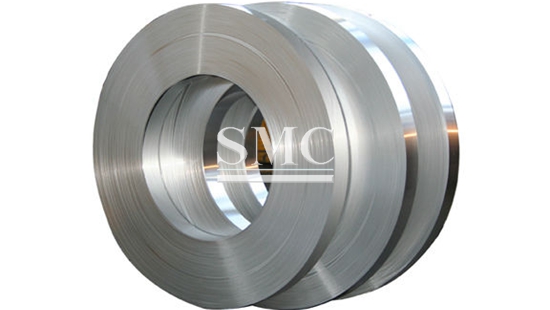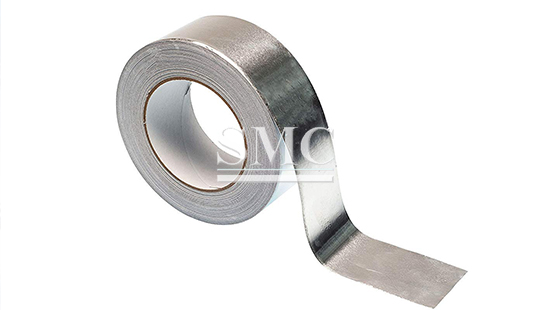Notice: Undefined index: sith_hide_share in /www/sites/alloy.wiki/index/wp-content/themes/likegoogle/single.php on line 32
Deprecated: get_settings is deprecated since version 2.1.0! Use get_option() instead. in /www/sites/alloy.wiki/index/wp-includes/functions.php on line 4862
Aluminum alloys (such as space aluminum) and stainless steel may look similar, but they are actually completely different. When deciding which metal to use in a project, we must pay attention to their differences and characteristics so that we know which one is better.
Let’s first see what is stainless steel?
Stainless steel is an iron alloy with a minimum chromium content of 10.5%. The chromium content produces a thin film of chromium oxide on the surface of the steel, called a passivation layer. This layer prevents corrosion of the steel surface. The greater the amount of chromium in the steel, the greater the corrosion resistance.
Stainless steel also contains various other elements such as carbon, silicon and manganese. Other elements can be added to increase corrosion resistance (nickel) and formability (molybdenum). Formability is the ability to change the shape of a metal product without causing permanent damage to it. The main advantage of stainless steel is that it is not as easily corroded or rusted as ordinary steel. Due to this unique nature, it is widely used in many industries, including construction, automotive and other industries.

Let’s see what is aluminum alloy again?
Aluminum alloys are known for their low density and resistance to corrosion through passivation. Aluminum and its aluminum alloys are critical to the aerospace industry, as well as in transportation and construction industries such as building facades and window frames. Aluminum alloy is very shiny, similar to silver, because it preferentially absorbs far ultraviolet radiation and simultaneously reflects all visible light, so it does not give any color of reflected light, unlike copper and gold in the reflection spectrum. Another important feature of aluminum alloys is their low density, 2.70g / cm3. Aluminum is a relatively soft, durable, lightweight, and ductile metal.
Aluminum alloys are non-magnetic and are not easily ignited. The new aluminum film can be used as a good reflector (about 92%) and visible light, as well as an excellent reflector for medium and far infrared radiation (up to 98%). The yield strength of pure aluminum is 7-11 MPa, while aluminum alloys have a yield strength of 200 MPa and 600 MPa. Aluminum alloys have about one-third the density and stiffness of steel. It is easy to process, cast, draw and squeeze. The corrosion resistance of aluminum alloy can be very good, because when the bare metal is exposed to the air, a thin aluminum oxide surface layer is formed, effectively preventing further oxidation, in a process called passivation. Due to the electrochemical reaction with copper alloy, the strongest aluminum alloy has poor corrosion resistance. This corrosion resistance greatly reduces the presence of water salts, especially in the presence of different metals.

Ten differences between stainless steel and aluminum alloy:
1. Strength-to-weight ratio. Aluminum is generally not as strong as steel, but it is also almost a third of its weight. This is the main reason why aircraft are made of aluminum.
2. Corrosion performance. Stainless steel is composed of iron, chromium, nickel, manganese and copper. Chromium is added as a reagent to provide corrosion resistance. Moreover, because it is non-porous, the corrosion resistance is increased. Aluminum has a high resistance to oxidation and corrosion, mainly due to its passivation layer. When aluminum is oxidized, its surface becomes white and sometimes deteriorates. In some extremely acidic or alkaline environments, aluminum can quickly corrode with catastrophic consequences.
3. Thermal conductivity. Aluminum products have better thermal conductivity (thermal conductivity) than stainless steel products. One of the main reasons for its use in automotive radiators and air-conditioning units.
4. Cost. Aluminum is usually cheaper than stainless steel.
5. Machinability. Aluminum is quite soft and easy to cut and shape. Stainless steel may be difficult to use due to abrasion and abrasion resistance. Stainless steel is harder than aluminum and harder to form.
6. Welding. Stainless steel is relatively easy to weld, while aluminum is difficult.
7. Thermal performance. Stainless steel can be used at much higher temperatures than aluminum, which can become very soft above about 400 degrees.
8. Electrical conductivity. Compared to most metals, stainless steel is a very poor conductor. Aluminum is a very good electrical conductor. Due to its high electrical conductivity, light weight and corrosion resistance, high voltage overhead power lines are usually made of aluminum.
9. Strength. Stainless steel is stronger than aluminum (assuming weight is not a consideration).
10. Impact on food. Stainless steel is less reactive with food. Aluminum can react to foods that may affect color and taste.
Guest contributors are welcome at the Alloy Wiki.It is a weekly wiki and guide on alloy information and processing technology, while also about the vast array of opportunities that are present in manufacturing. Our team of writers consists of a Machining Material Supplier / Machinist / Tool and Die Maker, a Biomedical Engineer / Product Development Engineer, a Job Development Coordinator / Adjunct Professor, and a President and CEO of a manufacturing facility.
Link to this article:Difference Between Stainless Steel and Aluminum Alloy
Reprint Statement: If there are no special instructions, all articles on this site are original. Please indicate the source for reprinting:Alloy Wiki,thanks!^^


